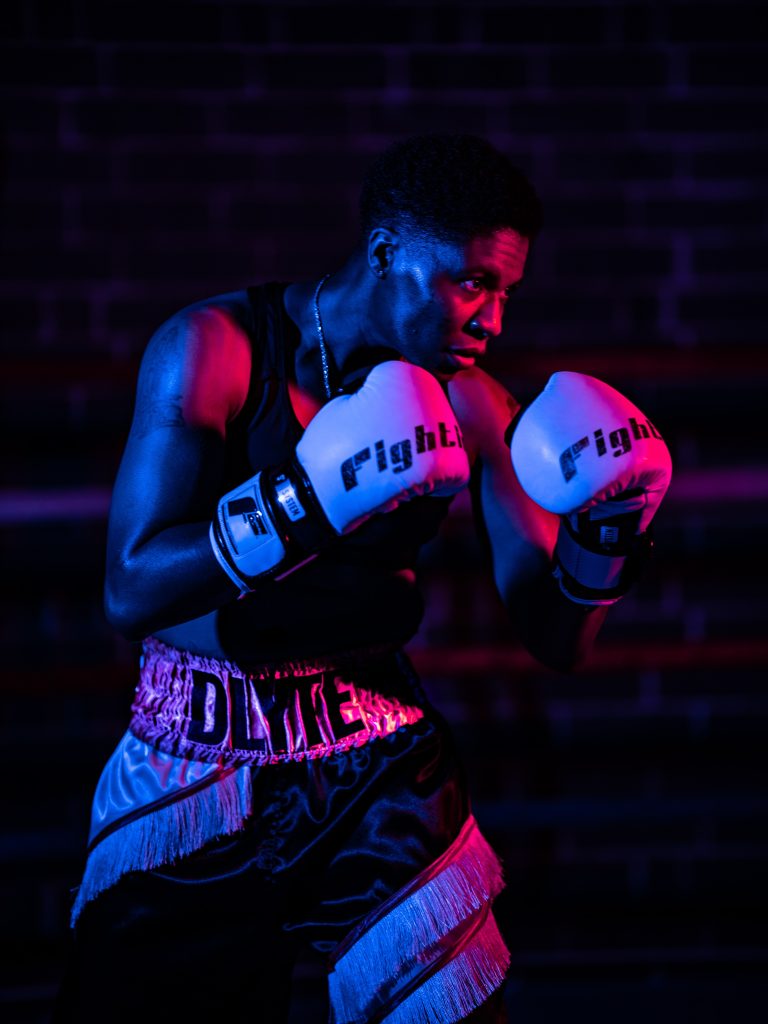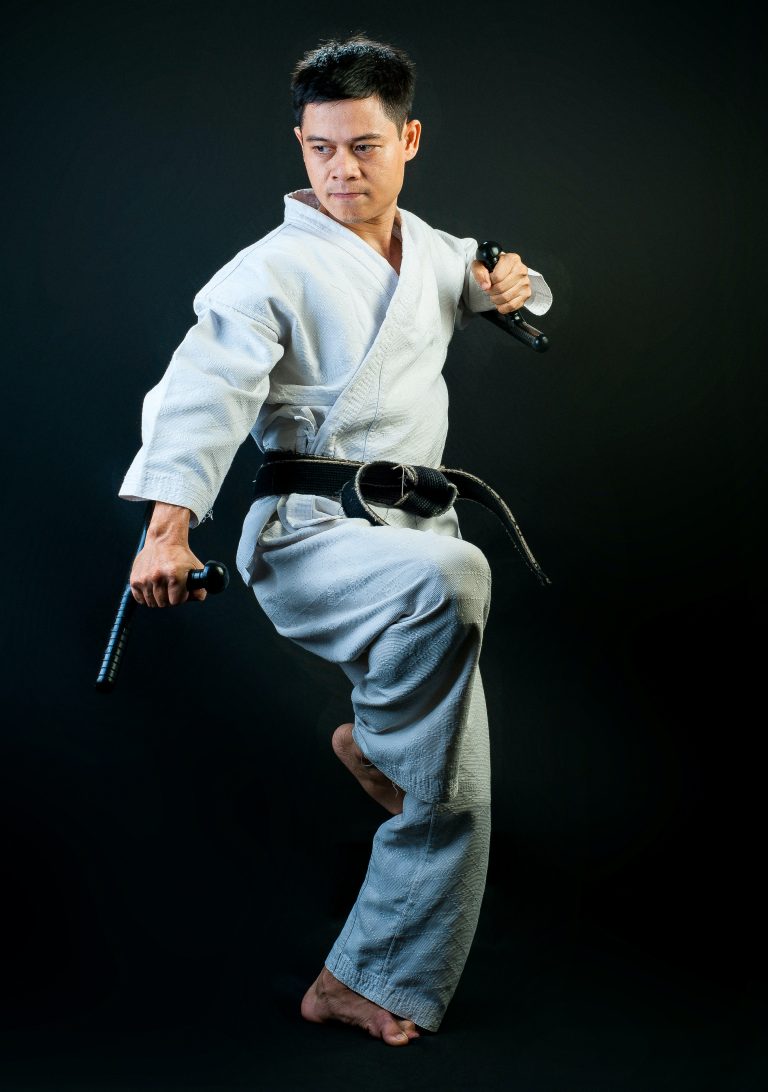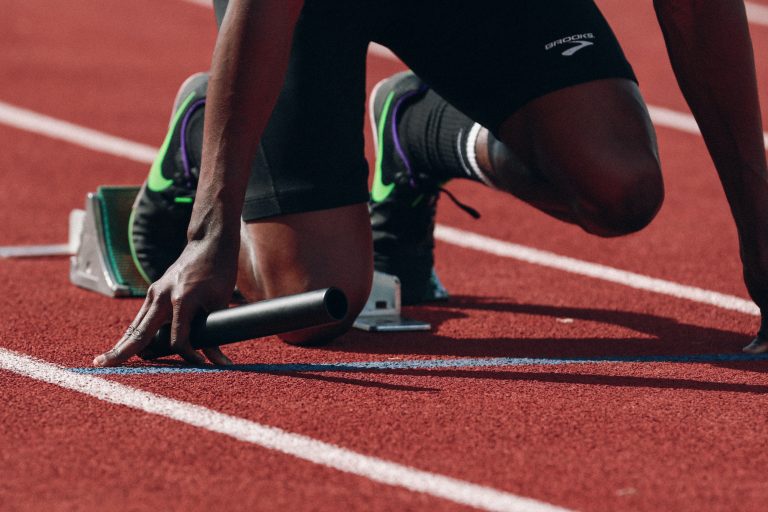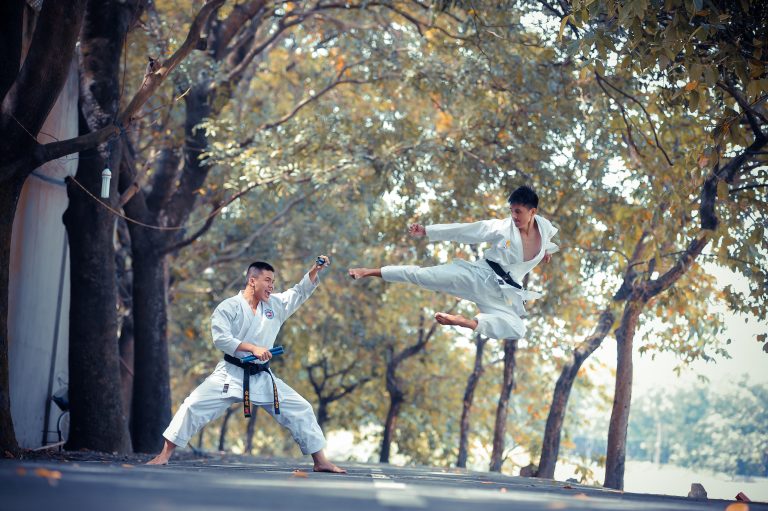Karate: How to Perform the Perfect Kicks
Karate is a martial art focused on striking techniques, and its kicks are known for their speed, precision, and power. Learning to perform perfect kicks is essential for any Karate practitioner, whether you’re a beginner or an advanced student. Here, we’ll discuss some tips to help you improve your kicks and execute them flawlessly.
Proper Stance
Before you start practicing kicks, it’s important to learn and maintain a proper Karate stance. Feet should be shoulder-width apart, with toes pointing forward, and feet parallel to each other. Knees should be relaxed, but not bent too much. The body should be upright, with the backbone straight and shoulders relaxed. The stance provides stability and balance, which essential when performing kicks.
Balance
Maintaining proper balance is essential when performing kicks. The best way to do this is to keep your hips facing forward and your core engaged. This position helps you to shift weight smoothly when you switch between kicks. Your upper body should remain upright while executing the kicks, and ensure that you don’t lean back or to the side as this may compromise your balance.
Proper Placement of Foot
The placement of the foot is vital when performing any type of karate kick. Proper foot placement ensures that you generate maximum power and speed. For front kicks (Mae Geri), starting position is with the ball of your foot on the floor, and the knee is lifted till it aligns with your chest. The knee is then extended forward with the toes pointed outwards. For sidekicks (Yoko Geri), you need to point your toes straight ahead when you lift the knee and then rotate the toes outwards before extending the leg sideways.
Alignment
Another important factor in performing the perfect kicks is alignment. Proper alignment helps you to generate more force behind your kicks. Always ensure your hips, knee, and foot are aligned in the same direction to maintain proper balance and to deliver maximum impact. Your top hip must be slightly forward to your lower hip, which puts your body in an optimized position to unleash speed and power.
Practice with a Partner
Practicing with a partner can help you to perfect your technique and timing. Start slowly and gradually work up to full force kicks. Your partner can help to assess your technique, stance, and alignment, while you both exchange tips on what works and what doesn’t. Practice different kicks at different levels of strength and speed to improve your ability to execute these kicks under any circumstance.
Practice, Practice, Practice
.
The key to improving your karate kicks, like any martial art, is practice. The more you practice, the better you become. Frequent practice helps you to build muscle memory and develop the proper technique, speed, and power, which will eventually translate into perfect kicks. The more you train, the more confident you become, and the better your kicks will get.
Conclusion
Karate is situated in technical excellence, and the key to delivering perfect kicks lies in the proper stance, body alignment, foot positioning, and practice, practice, practice. When you master these techniques, you’ll be able to deliver elegant, powerful, and beautiful kicks that will make you the envy of the dojo. Remember, it takes time and patience to become an excellent karate practitioner, but with hard work and dedication, anyone can perfect their technique and become a Karate master.
Frequently Asked Questions About Karate Kicks
Karate is a form of martial arts that involves a lot of physicality, balance, and precision. One of the key elements of Karate is the kicks, which are used for both offense and defense. While Karate kicks may seem straightforward, there are many technical aspects to perfecting them. In this blog post, we will answer some of the most frequently asked questions about how to perform the perfect Karate kicks.
1. What are the different types of Karate kicks?
There are several types of Karate kicks that you need to know as a Karate practitioner. Here are some of the most commonly used ones:
i. Mae geri (Front kick)
This is a straight forward kick aimed at the opponent’s stomach or midsection.
ii. Yoko geri kekomi (Side thrust kick)
This kick is aimed at the opponent’s ribs, and it involves a lateral motion where you extend your leg sideways before thrusting it forward.
iii. Mawashi geri (Roundhouse kick)
This kick is aimed at the opponent’s head or neck, and it involves a circular motion with your leg before striking the target.
iv. Ushiro geri (Back kick)
This is a backward-facing kick that is used when the attacker is directly behind you. The kick is aimed at the opponent’s stomach or solar plexus.
2. What are the proper techniques for performing Karate kicks?
Proper form is essential when it comes to Karate kicks. Here are some tips to help you perfect your techniques:
i. Keep your hips and shoulders square
When performing a Karate kick, it is crucial to keep your hips and shoulders square. This helps you maintain balance and control throughout the entire movement.
ii. Pivot your foot
Before executing a kick, it’s important to pivot your foot to ensure your hip is in the right position. This helps to generate more power in your kicks.
iii. Keep your core engaged
Keeping your core muscles engaged helps improve your balance and provides stability throughout your kick.
iv. Master your breathing
Breathing is essential in Karate, and mastering your breathing technique can help you execute your kicks with greater power and control. Inhale before you start the kick and exhale during the execution.
3. How can I increase my power and speed when performing Karate kicks?
Power and speed are the key components of an effective Karate kick. Here are some tips to help you improve both:
i. Practice with resistance
One of the best ways to increase your power is to practice with resistance. This means using a partner or equipment like a heavy bag, focus mitts, and pads to simulate contact.
ii. Strengthen your legs
Building strength in your legs will give you the power to execute your kicks with more force. Resistance training, plyometrics, and exercises like squats and lunges are great for building leg strength.
iii. Improve your flexibility
Flexibility is crucial in Karate as it enables you to raise your legs higher and extend them further. Incorporating stretching into your daily routine can help you improve your flexibility and range of motion.
iv. Train your reflexes
Training your reflexes will help you react faster and deliver your kicks with greater speed. Incorporating drills, including boxing ball, reaction ball, etc. can improve your reflexes.
4. How can I avoid common mistakes when performing Karate kicks?
Performing Karate kicks requires a lot of practice and concentration. Here are some common mistakes people make when performing Karate kicks and how to avoid them:
i. Not pivoting the foot
One of the most common mistakes beginners make is not pivoting their foot before executing kicks. This results in a weaker kick, and also affects the overall balance.
ii. Stiffness
Stiffness reduces the speed, accuracy, and power of a kick. Be relaxed and fluid when performing kicks to ensure proper execution.
iii. Neglecting the hip thrust
Another common mistake is neglecting the hip thrust, which is necessary for generating power in your kicks. Failing to use your hips can lead to weaker kicks.
iv. Not following through
Following through after a kick is essential for maintaining balance, controlling the power of your kick, and preparing for your next move. Neglecting to follow through can result in tripping or loss of balance.
5. How often should I practice Karate kicks?
Practice makes perfect, and the same goes for Karate kicks. Aim for regular practice of Karate kicks three to four times a week, with each session lasting at least 20-30 minutes.
i. Conclusion
In conclusion, Karate kicks are a crucial part of Karate and require practice, focus, and proper form to execute well. Keep practicing, be patient with yourself, and maintain a positive attitude throughout the process. Remember to follow the proper techniques, increase your power and speed, avoid common mistakes, and most importantly, have fun while perfecting your Karate kicks.
Inhaltsverzeichnis





